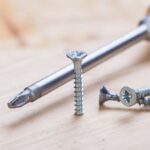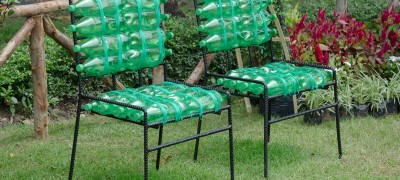Hinges and their installation on furniture
It is impossible to imagine modern functional furniture without high-quality fittings. When choosing accessories for a cabinet in a corner, it is important to study all possible connection methods and existing proposals from manufacturers in this area.

Varieties of furniture hinges
Nowadays, on the shelves of stores, consumers meet a wide range of products in this area. Mounts can vary in:
- structural features,
- installation method,
- intended purpose.
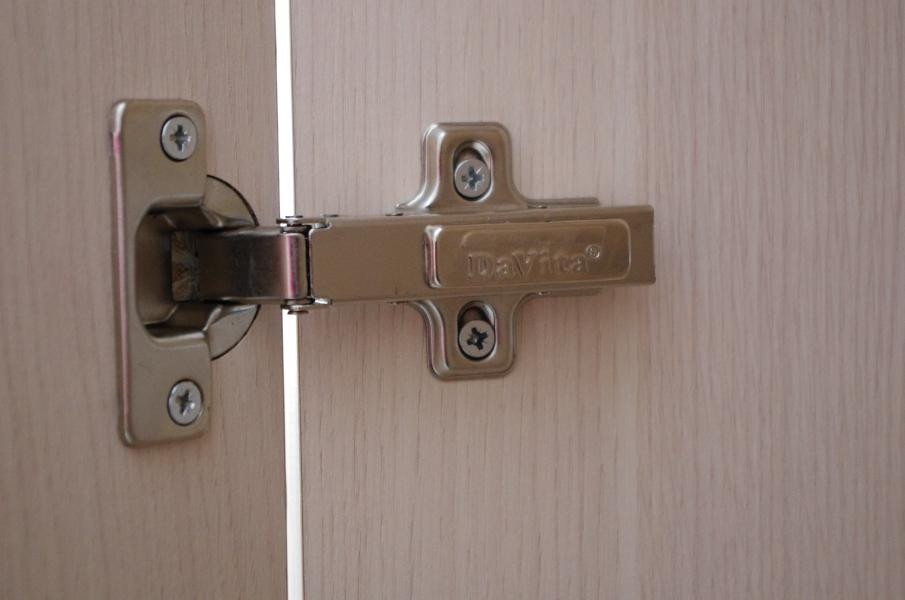
Paying attention to such moments, you can choose the most functional options that satisfy a specific request. Depending on the method of application to the base, the components have different names.

Overhead and semi-overhead
One of the most common among specialists are overhead four-hinged structures. This option is used when the door completely covers the walls of the box on which it is installed. It is popular for installation on any furniture: kitchen, dressing room, office. The product makes it possible to completely close the cabinet by firmly pressing the movable front panels to the base.
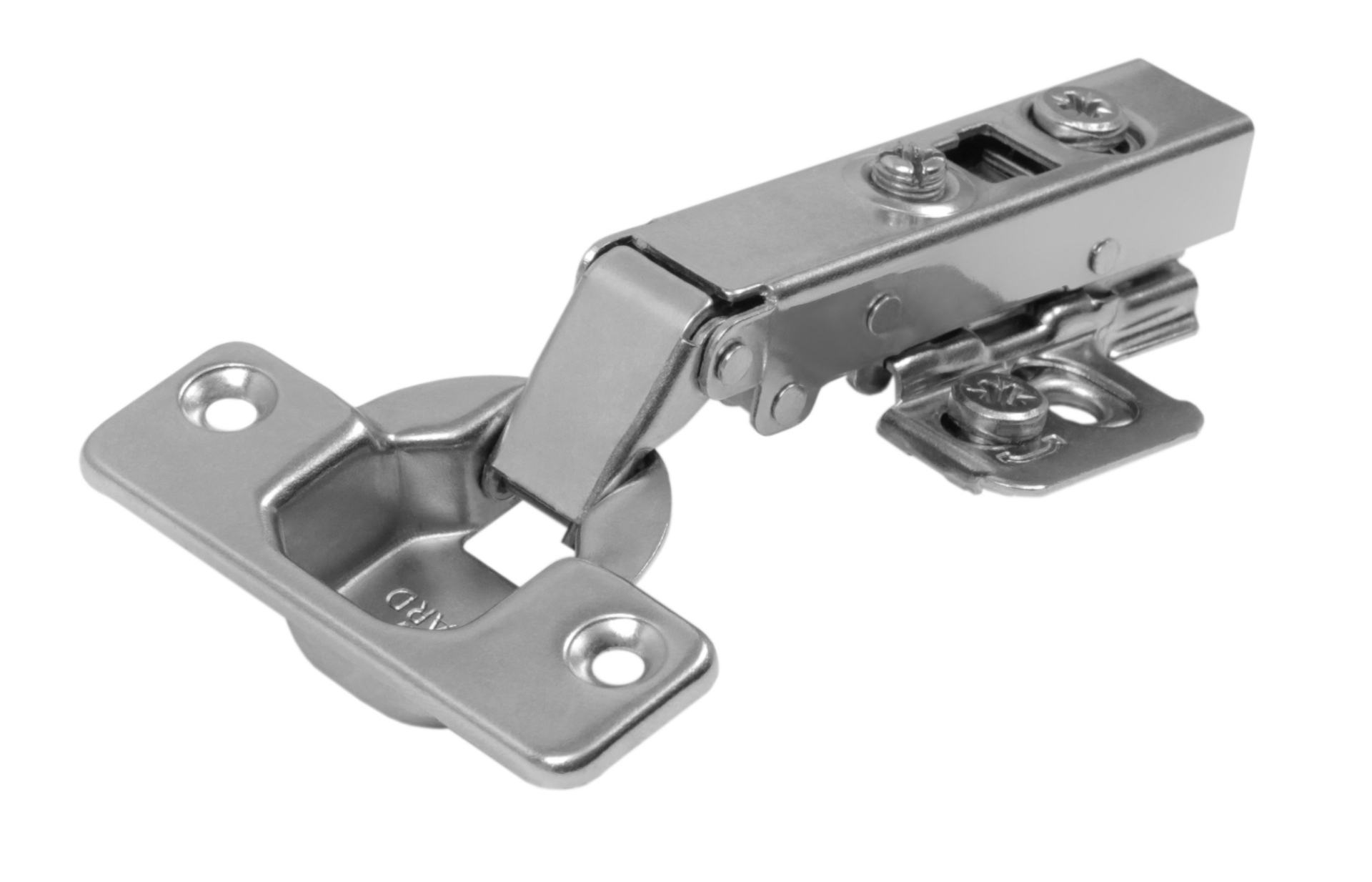
If the sidewall of the niche is closed by two door panels at the same time, half overlay parts are used. Their distinctive feature is the bending of the base. Thanks to this feature, you can get a small gap between the components of the facade, placed on the same area.

Inverse and piano
Inverse fixings allow 180º opening, forming a single line with the sidewall of the box. Such components are most often used to equip built-in spaces.

The piano mechanism is an obsolete type of product. It is very simple and understandable even for an inexperienced craftsman, but still cannot boast of reliability. The structure consists of two identical metal strips connected by a steel wire in the middle. Most often, this type is found on samples from past years. But sometimes it is still used today, for example, in making a kitchenette with folding seats.

Internal and corner
The internal structure is taken when it is necessary to place doors inside a niche. That is, the sash does not overlap the ends of the walls, but is located directly between them inside.

In most cases, a rectangular opening is required. But sometimes it is necessary to attach the facade at an angle that differs from the standard by several degrees in one direction or another.In this case, special fasteners are used, which are marked accordingly:
- “Plus”, if opening with a value higher than 110º is expected;
- "Minus" when the opening level is below 90º.
Most often, such hinges are purchased for a corner cabinet.

Note! Products of this group on the market have a step of 5º. If the obtained value is not a multiple of this indicator, then additional overlays are used. These devices allow you to set the correct parameters yourself.
Card loops
Representatives of this group in many ways resemble their piano counterparts. It also consists of two metal plates that are connected by a single hinge. Most often, such a thing is used in furniture design to give things the effect of antiquity. Card elements are often made in the form of various shapes with wavy, rounded or pointed edges.

Adit and lombard
The adit components allow you to attach the sash not to the sidewall, but to the blank wall of the cabinet located in front. This type of accessory is often also referred to as "blind" because they attach the door to an adjacent bezel.

Lombard auxiliaries are used to attach folding elements. This part is installed on the curbstone from the ends, which makes it possible to retract the sash by 180º.

How to choose the right
There are a few things to keep in mind when choosing the right accessories. First of all, we pay attention to what material they will be made of. Depending on this, several groups can be distinguished:
- products that are suitable for chipboard or MDF fiberboards,
- elements that can be mounted on the glass door,
- parts for joining to a metal profile.
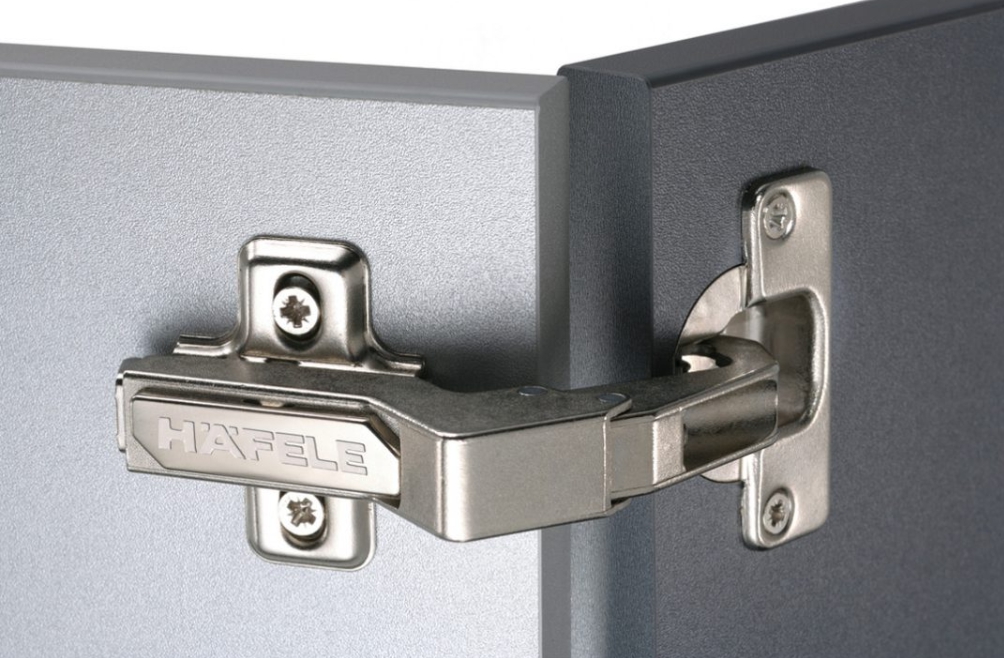
When it comes to making a pedestal in a corner, you need to understand at what angle the facade will be installed in order to choose the right fasteners.

Important! We take into account the dimensions and weight of the front panel in advance. It may be worthwhile to provide for a larger number of hinge mechanisms or purchase reinforced models.
Installation of furniture hinges
In order to fix everything efficiently and quickly, it is better to immediately take care of the tools that we will use. The master should have the following things at hand:
- screwdriver,
- end mill 35mm,
- pencil, measuring devices (tape or ruler, protractor),
- awl,
- screwdriver and self-tapping screws.
Traditionally, the same auxiliary ones are used for arranging the pedestals in the corner, as for other types of products. The opening level in this case will be less than 90º, so you should choose products marked "minus".

45 degree setting rule
The order of attaching the fasteners is a standard procedure consisting of certain stages. But when it comes to equipping a locker in the corner, there are nuances. When choosing a hinge for a corner cabinet, it is necessary to follow the installation rule at 45 degrees. For this, it is better to take a Pythagoras protractor - an auxiliary measuring device. With its help, it will be possible to accurately determine the closing angle, which will help to tightly fix all the mechanisms.

Additional Information.You can purchase a ready-made protractor in a specialized store, or you can make it yourself using a piece of thick cardboard for this.
The corner structure consists of several parts:
- A hinge that is attached to the door leaf. It includes a bowl, an arm (body), an installation groove.
- A mounting platform (striker) designed to be placed on the main box.
This work is a sequence of simple steps:
- Measurement and marking of the door leaf.
- Drilling holes in the movable panel for screws and bowl.
- Attaching the hinged part to the front sash.
- Marking and punching holes in the housing to accommodate the striker.
- Attaching the striker to the cabinet.
- Result adjustment.
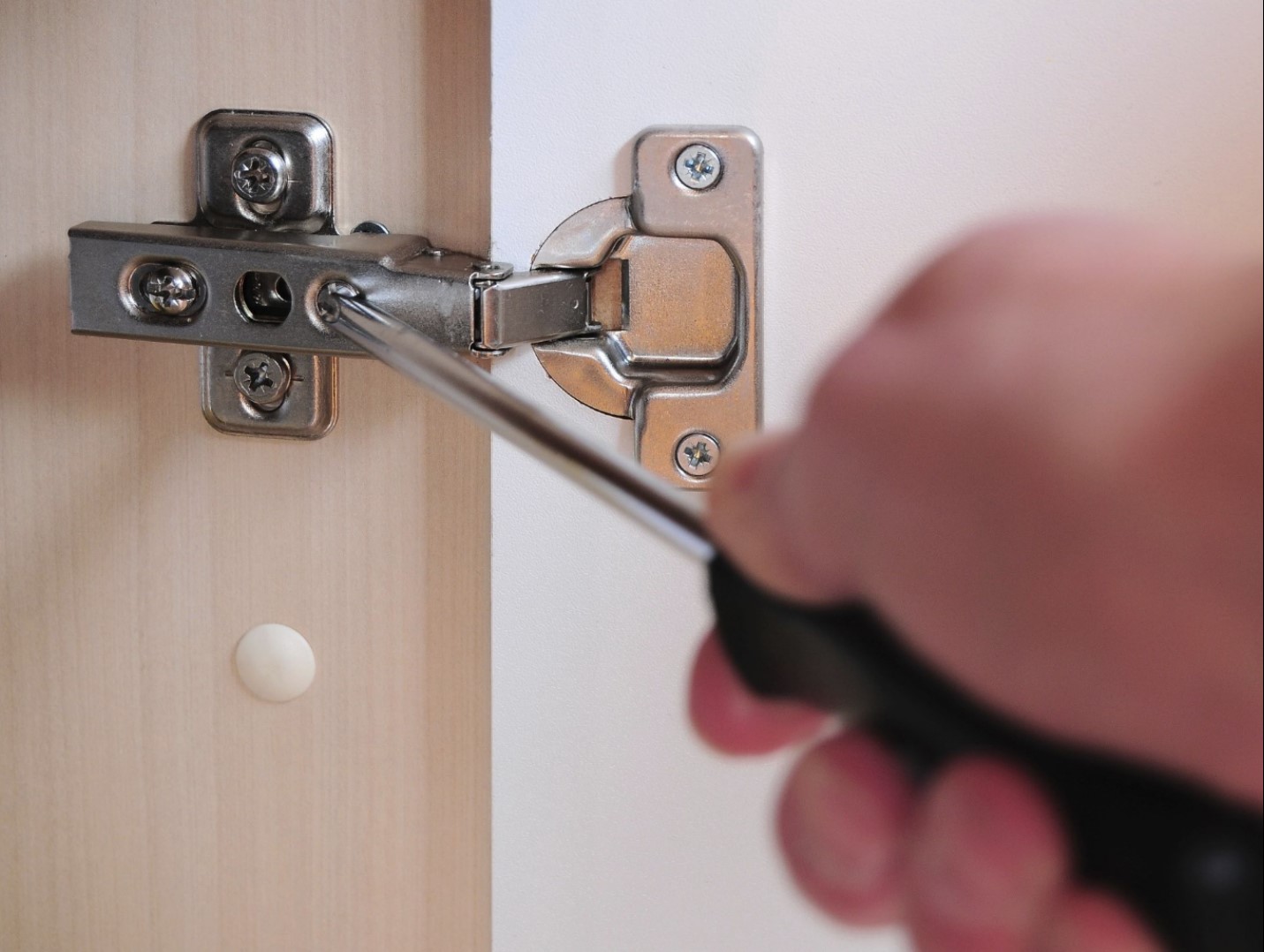
How to make a hole for fastening
To make suitable holes for the fittings, you need to carefully measure and mark everything from the very beginning. The quality of the result directly depends on how accurate the marking will be. We make sure that the location of the hinge does not coincide with the internal shelves.

After drawing marks with a pencil on the moving surface, we proceed to drilling the holes. We start by making a recess for the bowl. Its depth is usually 12-13 mm. It is not necessary to drill a niche deeper, since the master cannot always be sure of the quality of the material from which the door is made.

Important! Working with a cutter is not an easy task. If you have no experience, then it is better to first try to do it on a draft. Any unnecessary piece of wood board is suitable for training.
How to attach hinges to furniture doors
After everything is prepared, you can fix the components. All parts are inserted into the grooves, aligned with a building level, and fixed with screws. They should be tightened as tightly as possible so that everything is held securely. The installation process is complete. Now it's time to start hanging the front part on the body.

Having carefully studied the question, you can choose the most effective components for furniture. Even a beginner will install them following the instructions. In order to attach the accessories yourself, you do not need expensive equipment and professional skills. It is enough to thoughtfully read this article and prepare everything you need for work in advance.

Video: how to install an internal furniture hinge



